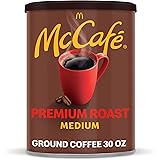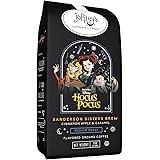Crafting the Perfect Chocolate Coffee Stout: An Expert’s Guide to American Stout Homebrewing
Ever wondered how to truly capture intense chocolate and coffee notes in your homebrewed stout without overwhelming the base beer? Brewing a specialty stout like a chocolate coffee stout presents a unique challenge, requiring a meticulous approach to recipe formulation, water chemistry, and fermentation management. The video above offers a fantastic, practical walkthrough, demonstrating the process of crafting a robust American stout infused with the rich essence of cacao nibs and cold brew coffee. We’ll delve deeper into the technical nuances and expert strategies that elevate such a brew from good to extraordinary, exploring the scientific principles behind each step.
Deconstructing the American Stout Recipe: A Malt and Hop Masterclass
The foundation of any exceptional stout lies in its grist. For this chocolate coffee stout, the brewer chose an American stout base, distinguishing it from an oatmeal stout with a hoppier, roastier profile. This specific recipe for 5.5 gallons into the fermenter showcases a blend of specialty malts designed for complexity and depth.
Malt Bill Breakdown
The selected malts contribute distinct characteristics, layering flavor and color into the stout:
- 14 lbs British Pale Two-Row Malt: This forms the backbone, providing fermentable sugars and a clean, malty base. Its British origin often imparts a slightly toastier, nuttier character than its American counterpart, which complements the stout profile well.
- 1 lb Carafa III: A dehusked roasted malt, Carafa III contributes intense dark color and significant roast character without the harsh astringency often associated with standard black malts. It’s crucial for achieving that quintessential stout appearance and flavor.
- 1 lb Crystal 60 Malt: Crystal malts lend sweetness, caramel notes, and improved body. Crystal 60 adds a medium-caramel, slightly toffee-like sweetness that balances the roast and bitterness, contributing to the beer’s richness.
- 1 lb Chocolate Malt: True to its name, chocolate malt delivers deep brown color and prominent chocolate, cocoa, and nutty flavors, essential for a chocolate coffee stout. It’s a key player in building the desired flavor profile.
- 0.5 lb Black Barley: Known for its pronounced roasty, coffee-like, and slightly acrid notes, black barley intensifies the dark color and adds an assertive roast that pushes this towards the American stout style. It’s used in smaller quantities to avoid overwhelming the other flavors.
This carefully crafted malt bill aims for a pre-boil Original Gravity (OG) of 1.057 and an actual OG of 1.078, which ultimately came in at 1.074. Such a high gravity indicates a substantial beer with significant alcohol potential and a robust body, a hallmark of well-executed American stouts.
Hop Schedule: Balancing Bitterness
For an American stout, a single bittering addition is often preferred to keep the focus on malt and roast character, while still providing balance. The brewer opted for 1.5 ounces of Northern Brewer hops at 60 minutes. With a 9.9% alpha acid rating, this translates to an estimated 44 IBUs (International Bittering Units).
Northern Brewer hops are celebrated for their clean, crisp bitterness with subtle woody and minty undertones. This choice ensures a pure bittering contribution, preventing any extraneous hop flavors or aromas from competing with the stout’s complex malt and adjunct profile. A 44 IBU count for a stout of this gravity provides a firm but not aggressive bitterness, upholding the style’s characteristics.
Precision Mashing: Temperature, Time, and pH Management
The mash is where enzymatic conversion of starches to fermentable sugars occurs, significantly influencing the beer’s body, fermentability, and overall character. A mash temperature of 154°F for 60 minutes was chosen for this chocolate coffee stout.
Targeting Mouthfeel with Mash Temperature
Mashing at 154°F is on the higher end of the typical temperature spectrum (148-158°F). This temperature favors beta-amylase activity, which produces more complex, unfermentable sugars, leading to a beer with increased mouthfeel and a higher final gravity. The goal was an FG around 1.020-1.021, though it ultimately finished at 1.028, resulting in a slightly sweeter profile consistent with a Sweet Stout designation.
Mash Duration and pH Control
While often mashing for 90 minutes, the brewer opted for a 60-minute mash here. This shorter duration helps mitigate potential issues with high percentages of roasted malts. Prolonged exposure of roasted malts to mash water can sometimes lead to an over-extraction of acrid, harsh, or overly roasty flavors. Furthermore, roasted malts are inherently acidic, and their presence significantly drops mash pH. Maintaining mash pH between 5.2-5.5 is critical for optimal enzyme activity, yeast health, and flavor stability. A lower-than-ideal pH can lead to tartness or astringency in the finished beer.
The brewer wisely kept baking soda on standby to adjust the pH if it dropped too low, a common strategy when brewing dark, roast-heavy beers. Checking mash pH during the process is a proactive measure to ensure enzyme efficiency and prevent off-flavors, securing a balanced final product.
The Art of Water Chemistry: Crafting a Malt-Forward Profile
Water chemistry, often overlooked by novice brewers, plays a pivotal role in shaping beer flavor and mouthfeel. This brew marks a departure from a sulfate-dominant profile to a chloride-dominant one, which is particularly beneficial for stouts.
Chloride to Sulfate Ratio
A higher chloride-to-sulfate ratio (Cl:SO4) typically accentuates malt sweetness, body, and fullness, while a higher sulfate-to-chloride ratio tends to highlight hop bitterness and dryness. For a rich, complex stout where malt character and body are paramount, prioritizing chloride is a strategic choice. The target water profile, in parts per million (ppm), was:
- Calcium (Ca): 52 ppm
- Magnesium (Mg): 8 ppm
- Sodium (Na): 65 ppm
- Sulfate (SO4): 72 ppm
- Chloride (Cl): 115 ppm
- Carbonate (HCO3): 55 ppm
This profile features a Cl:SO4 ratio of roughly 1.6:1, significantly enhancing the perception of malt richness and smoothness. To achieve this, specific brewing salts were added: 3g gypsum (calcium sulfate), 1g Epsom salt (magnesium sulfate), 1g calcium chloride, and 1g calcium carbonate. These precise additions manipulate the mineral content of the strike water, ensuring an ideal environment for enzyme activity and a favorable taste profile in the finished beer.
Yeast Management and Fermentation: Nottingham’s Role in a High-Gravity Stout
Yeast health and proper fermentation management are non-negotiable for producing high-quality beer. For this chocolate coffee stout, two packets of Nottingham ale yeast were pitched.
The Importance of Yeast Rehydration
The video emphasizes the critical step of rehydrating dry ale yeast, despite some manufacturers suggesting direct pitching. Evidence strongly supports rehydration as it significantly increases yeast cell viability and survival rates. Sprinkling dry yeast directly into wort can shock the cells due to osmotic pressure differences, leading to a substantial die-off. Rehydration by slowly cooling boiled water to 90-110°F, then gently stirring in the yeast, allows the cells to acclimate and minimizes stress. This proactive approach ensures a robust and healthy fermentation, mitigating the risk of off-flavors (like fruity esters from underpitching) and ensuring efficient attenuation, especially in higher gravity beers like this American stout.
Fermentation Dynamics and Temperature Control
Fermentation was targeted at the standard ale temperature range of 65-68°F for approximately two weeks. Nottingham yeast is known for its fast and vigorous fermentation, a characteristic observed in this brew with high krausen lasting only about three days and primary fermentation completing within five days. Despite this rapid activity, the final gravity settled at 1.028, slightly higher than the desired 1.020-1.021. To encourage further attenuation, the temperature was gradually ramped up to 72°F, a common strategy to give yeast a final push. This elevated temperature can help reduce residual sugars and clean up any diacetyl. However, in this case, the resulting beer, though delicious, remained a Sweet Stout rather than approaching Imperial Stout gravity, primarily due to the specific mash conditions and yeast performance.
Adjunct Integration: Elevating Flavor with Cacao Nibs and Coffee
The true essence of a chocolate coffee stout comes alive with the careful addition of adjuncts during secondary fermentation. The brewer incorporated 2 ounces of cold brewed coffee and 6 ounces of cacao nibs into the secondary vessel.
Strategic Adjunct Additions
Adding adjuncts in secondary fermentation allows for precise control over their flavor contribution without the harshness that can arise from boiling. Cold brew coffee is preferred over hot-brewed coffee as it extracts less acidity and bitterness, yielding a smoother, richer coffee flavor. Cacao nibs, being the fermented and dried pieces of cacao beans, offer pure, unadulterated chocolate essence—woody, nutty, and distinctly chocolatey, without the added sugars or fats of processed chocolate. The contact time with these adjuncts was around four to five days in cold storage, with regular sampling to monitor flavor development. This careful observation is crucial to prevent over-extraction, which can lead to overly bitter or acrid flavors from the coffee or a muddy character from the cacao. Adjusting the quantity of adjuncts based on the beer’s final ABV and overall flavor profile, as the brewer did by dialing back slightly, is a smart move for achieving balance.
Evaluating the “Hello Darkness My Old Friend” Chocolate Coffee Stout
The culmination of any brewing project is the tasting and evaluation of the final product. Named “Hello Darkness My Old Friend,” this stout registered 6.1% ABV and 44 IBUs. While not reaching Imperial Stout status due to its finishing gravity, it firmly established itself as a well-crafted Sweet Stout.
Sensory Profile and Refinements
The beer poured a beautiful, very dark black with a medium brown, dark tan head, though head retention was noted as less than ideal. This often indicates a challenge with proteins or certain brewing parameters. The aroma presented pleasant woody and chocolate notes from the cacao nibs, distinctly different from processed chocolate. On the palate, the body was medium to medium-thin, slightly less full than anticipated given the higher finishing gravity, perhaps influenced by the perceived alcohol contribution. Despite these minor notes for improvement, the overall flavor was lauded, showcasing a harmonious balance of roast, coffee, and chocolate, mellowed by a three-week maturation period. This aging allows the roasted malt character to soften and the adjunct flavors to integrate seamlessly.







